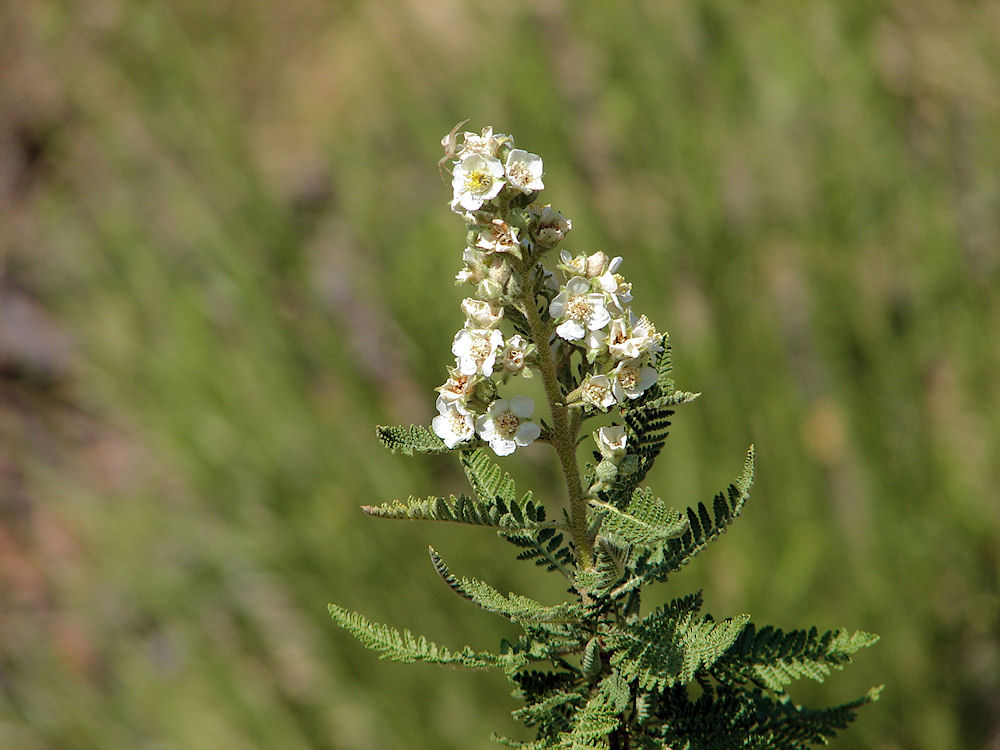Arizona Wild Flowers
Pictures, Photos, Images
Descriptions, Information, Reviews.
Fernbush, Chamaebatiaria millefolium.
We Are Proud Of Our SafeSurf Rating!
Click On Any Of The Following Links By Amazon.Com
For Books, & Videos About Wildflowers Of Arizona & The Southwest USA. No Obligation!
 |
| Fernbush, Chamaebatiaria millefolium. Flowering Plant Photos Taken September 01, 2009. On Canyon Rim. Walnut Canyon National Monument Sinagua Ruins, Flagstaff, Arizona. |
|---|
 |
| Fernbush, Chamaebatiaria millefolium. Flowers Photos Taken September 01, 2009. On Canyon Rim. Walnut Canyon National Monument Sinagua Ruins, Flagstaff, Arizona. |
| Fernbush, Chamaebatiaria millefolium. Leaves Photos Taken September 01, 2009. On Canyon Rim. Walnut Canyon National Monument Sinagua Ruins, Flagstaff, Arizona. |
Fernbush.
We wish to thank Wikipedia, the free encyclopedia for some of the information on this page. We share images and information with Wikipedia. Fernbush (Chamaebatiaria millefolium), or Desert Sweet, is a densely branched, aromatic, dicot, shrub that grows from about 5' x 5' to 7' x 7' with a rounded form. Its flowers are white and roselike, in showy clusters at the ends of the branches, that attract butterflies and bees, from June through September. The genus, Chamaebatiaria is a monotypic genus, of aromatic shrub in the rose family containing only the single species, Chamaebatiaria millefolium, which is known by the common names fern bush and desert sweet. Its foliage is fragrant, fernlike, scaly and sticky. Its evergreen in warm climates, deciduous in cold climates, Fernbush has very attractive fall color. Its seeds are brownish, colorful, and provide winter interest. Its bark is shreddy and red. This shrub grows very well in xeric gardens. The white flowers attract numerous species of small bees and wasps so it may be best to plant it away from walkways, doorways, etc. The plant emits a very pleasant smell after a rain. It is a great xeriscape plant for higher elevations.
Quick Notes:
Height: About 5 feet by 5 feet in size, sometimes larger to 8 by 8 feet.
Bark: The bark is a flaky, reddish
Flowers: Flowers whitish in color and are 1/2 up to 1 inch wide. The five petals have yellow stamens. After flowering, large brown seed heads are formed.
Flowering Time: June and August - September.
Fruit: The Seeds are plumed and spiral.
Leaves: Leaves are 3, finely twice pinnately compound, fern-like. Leaves are downy, fern-like and gray-green.
Found: Native to the USA (AZ, CA, ID, NV, OR, UT)). Also found in Mexico in northern Sonora, Baja Norte, & Baja California.
Hardiness:
Soil pH requirements:
Sun Exposure:
Elevation: 3,400 - 10,200 Feet.
Habitat: Dry and rocky slopes, mostly in pinyon - juniper woodland, desert mountains.
Miscellaneous: It is a great xeriscape plant for higher elevations. Photos Taken September 01, 2009. Walnut Canyon National Monument Sinagua Ruins, Flagstaff, Arizona.
|
We Are Proud Of Our SafeSurf Rating!
Click On Any Of The Following Links By Amazon.Com
For Books, & Videos About Wildflowers Of Arizona & The Southwest USA. No Obligation!
| © 1966 - Present, Audrey, Eve, & George DeLange |
